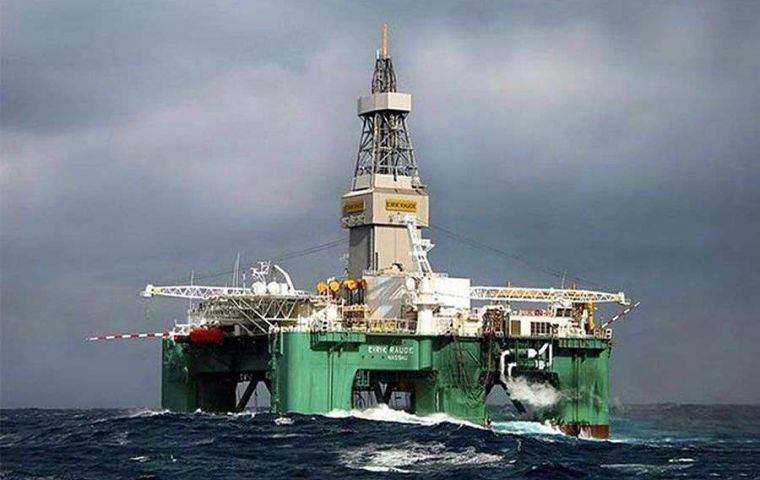MercoPress. South Atlantic News Agency
Promising update for Sea Lion development and Falklands' oil industry
 According to the 2024 NSAI Independent Report, the certified gross 2C resources in the overall NFB have increased from 712 MMbbls to 791 MMbbls.
According to the 2024 NSAI Independent Report, the certified gross 2C resources in the overall NFB have increased from 712 MMbbls to 791 MMbbls. Rockhopper Exploration PLC has released a corporate update in which it refers to the recent release published by Navitas Petroleum LP on the Sea Lion development in the North Falkland basin. The release includes an updated development plan to align with their static and dynamic reservoir models, resulting in the increase in certified resources in an updated NFB independent resource report conducted by Netherland Sewell & Associates on behalf of Navitas.
According to the 2024 NSAI Independent Report, the certified gross 2C resources in the overall NFB have increased from 712 MMbbls to 791 MMbbls. This represents an increase in resources of 11% in the overall NFB portfolio compared to the previous certified 2C resource, as published on 20 March 2023.
Likewise Navitas has identified suitable and available existing floating production storage and offloading (“FPSO”) vessels and is actively working with leading industry vendors to secure all long lead equipment, continuing to target Sea Lion phase 1 Final Investment Decision (“FID”) in 2024 and first oil at the end of 2026.
The Sea Lion Field Development Plan (“FDP”), which has been optimized utilizing the selected FPSO specifications, still comprises 23 wells drilled in two phases with a 16% increase in gross 2C resources from 269 MMbbls to 312 MMbbls out of overall 791 MMbbls certified discovered resources in the NFB. Against a background of continued industry cost inflation, gross capex required to first oil has been reduced from US$1.3 billion to US$1.2 billion with a capex of approximately US$8 per barrel and opex across life of field has been materially reduced to under US$17 per barrel, providing very robust economics and a lower risk project with a lower attractive break even under US$25 per barrel (compared to the US$27 previously reported).
The hydrocarbons will be produced through the redeployed FPSO, to provide an extended plateau for some eight years through a “Drill to Fill” optimization, with a peak production rate of up to 55,000 bbls/d. The prolonged plateau increased total recovery and lowered cost per barrel means that the NPV10 remains within 5% of previously published numbers despite the initial lower plateau production rate. Front end engineering design (“FEED”) is ongoing evaluating potential for further accelerated production ramp up and increased capacity.
The FPSO has a disconnectable turret enabling redeployment to another NFB field and allowing a second, potentially larger vessel to replace it on Sea Lion with increased production capacity above 80,000 bbls/d. The long term potential for the Basin could utilize up to 3 FPSOs with a total production of approximately 200,000 bbls/d. This phased plan minimizes CAPEX to first oil while providing flexibility for basin expansion and acceleration of production from fields beyond Sea Lion.
An updated FDP has been submitted to the Falkland Islands Government and it is anticipated that an updated Environmental Impact Assessment (“EIA”) will be submitted during Q1 2024.




Top Comments
Disclaimer & comment rulesCommenting for this story is now closed.
If you have a Facebook account, become a fan and comment on our Facebook Page!